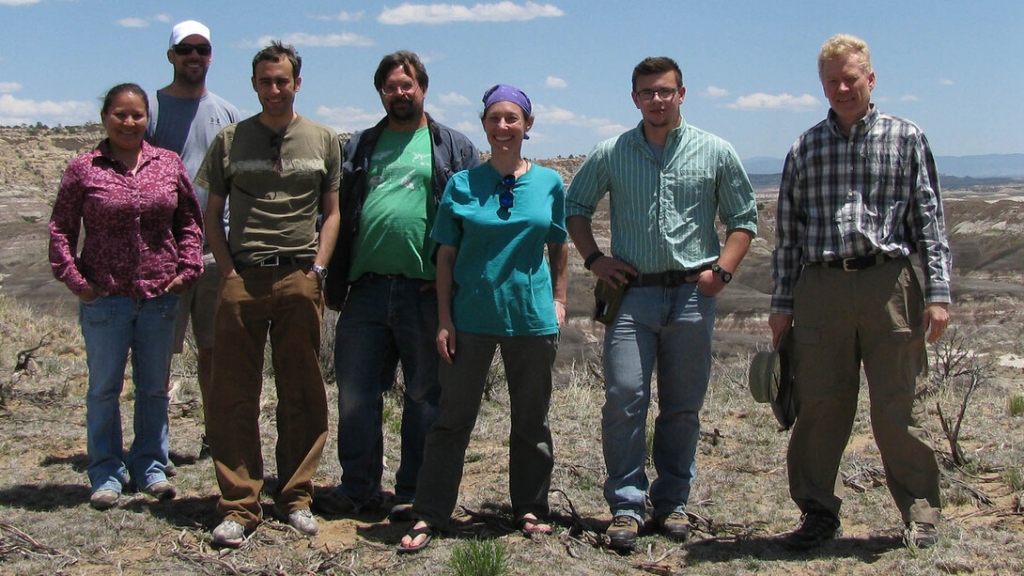Earth and Atmospheric Sciences
Mike O'Connor, November 7, 2025
Research team finds dinosaurs were thriving before the asteroid hit
A new study is helping settle one of paleontology’s most enduring debates: Were dinosaurs already dwindling before the asteroid impact 66 million years ago?
For decades, scientists have questioned whether dinosaurs were in decline, in part because most late-Cretaceous fossils come from the northern plains of North America. That limited record left big gaps and big uncertainty.
Now, researchers, including the University of Nebraska–Lincoln’s Ross Secord, associate professor in the Department of Earth and Atmospheric Sciences, have filled a crucial missing piece. The team precisely dated a fossil-rich rock layer in New Mexico, known as the Naashoibito Member, confirming it formed during the final few hundred thousand years of the Cretaceous and was equivalent in age to dinosaur-bearing rocks in the northern Great Plains.
The site preserves some of the last nonavian dinosaurs on Earth, offering a rare window into life just before the extinction even.

Using ecological modeling, the team found that dinosaur communities across North America were highly diverse, stable, and regionally distinct right up until the asteroid struck. Their findings counter the long-held idea that dinosaurs were already on the decline and instead show ecosystems shaped strongly by temperature and geography.
As a principal investigator, Secord assisted with conceptualizing the project, collecting samples for paleomagnetic and isotopic analysis, searching for volcanic ashes to date, and measuring stratigraphic sections.
“The dinosaur fauna we dated had been known for over a century but was thought by most paleontologists to be considerably older,” Secord said. “It contained dinosaurs like Alamosaurus, a giant sauropod, that were thought to have gone extinct before the asteroid impact in the late Maastrichtian. However, it turns out they were still alive in New Mexico.”
The focus of the initial project, Secord said, was to study changes in fossil mammals and plants after the K-Pg mass extinction.
“When we took samples for paleomagnetic analysis,” Secord said, “we discovered these rocks were younger than expected, so this became a spin-off of the original project.”
The team’s work, led by Andrew Flynn of New Mexico State University, was published in Science, available online.
In addition to his departmental role, Secord serves as a curator of vertebrate paleontology at the University of Nebraska State Museum.





